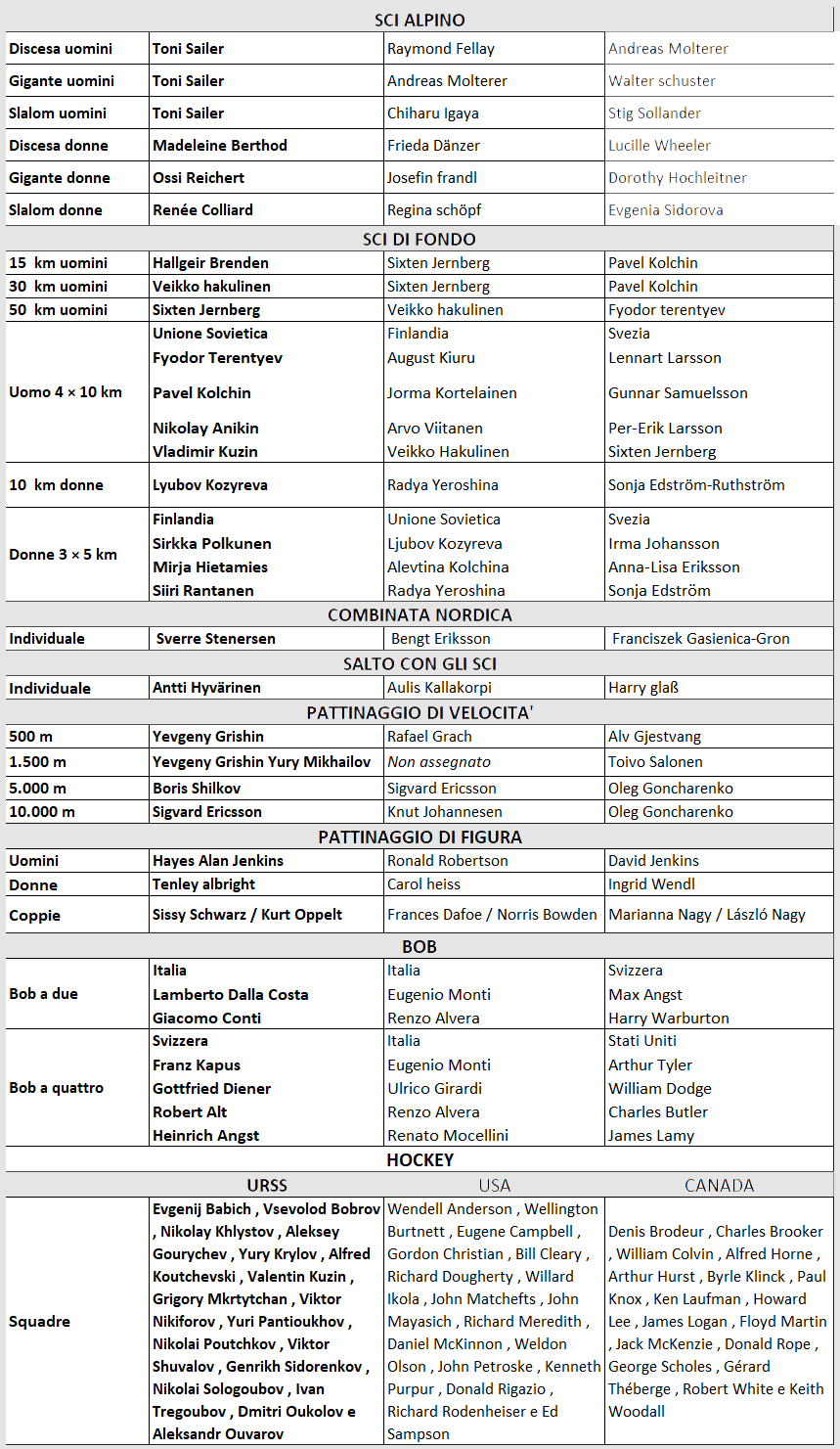Le gare_
In adempimento alle regole del C.I.O., si provvide a far stampare i programmi e le regole generali di ciascuno sport, ma in un solo fascicolo, anzichè uno per ogni singolo sport. Il fascicolo era di formato 19x13, tascabile, di 102 pagine e comprendeva le seguenti materie: il programma - l'orario generale - il diagramma del C.O. e dei suoi servizi - gli elenchi dei membri del C.I.O., dei C.N.O., del C.O. e del C.O.N.I. - la carta dei Giochi olimpici, lo statuto ed il regolamento del C.I.O. - l'orario giornaliero delle gare - le cerimonie protocollari.
In accordance with Rule of the International Olympic Committee, the programme and the regulations for each sport were published - but in a single volume, rather than in separate brochures for the individual sports. The booklet measured 19x13 cms., could be carried in the pocket, and numbered 102 pages. The contests were as follows: - the programme - the general time-table - a diagram showing the set-up of the Organizing Committee and its branches - the lists of members of the International Olympic Committee, and of CONI - the Charter of the Olympic Games, and the statute and rules of the International Olympic Committee - the daily time-table of the events - the official ceremonies.

Nello Sci Alpino ai VII Giochi olimpici invernali, vennero assegnate sei medaglie (3 maschili e 3 femminili) in tre discipline: Discesa Libera, Slalom Gigante, Slalom Speciale. I primi tre classificati di ciascuna gara, oltre alla medaglia olimpica ottennero anche quella dei Campionati mondiali di sci alpino. Le due gare di combinata assegnarono solo le medaglie valevoli per i campionati mondiali. Altre due medaglie vennero assegnate nel bob a 2 e nel bob a 4 maschili.
Il torneo di Hockey su ghiaccio, fu considerato valido anche come 23º campionato del mondo di hockey su ghiaccio e 34° campionato europeo organizzato dalla International Ice Hockey Federation. Le partite si svolsero presso lo Stadio Olimpico del Ghiaccio di Cortina D'Ampezzo.
Nel Pattinaggio di Figura vennero assegnate medaglie in tre specialità mentre furono quattro quelle assegnate nel Pattinaggio di Velocità, disputate sul Lago di Misurina.
Lo Sci Nordico assegnò medaglie in otto specialità. Rispetto all'edizione precedente furono introdotte alcune novità nel programma dello sci di fondo, già inserite in quello dei Mondiali del 1954: in campo femminile fu aggiunta la staffetta 3x5 km; in quello maschile, la 18 km venne sostituita dalla 15 km e dalla 30 km.
Le gare di Salto con gli sci e di Sci di Fondo, sia maschili sia femminili, furono considerate valide anche ai fini dei Campionati mondiali di sci nordico 1956, dei quali costituirono la ventunesima edizione, mentre quella di Combinata Nordica assegnò soltanto il titolo olimpico.
Per quel che concerne la partecipazione, a Cortina d'Ampezzo fece il suo esordio olimpico l'Unione Sovietica, mentre la Germania Est e la Germania Ovest presentarono un'unica squadra.
In alpine skiing at the VII Olympic Winter Games, six medals were awarded (3 men and 3 women) in three disciplines: Downhill, Giant Slalom, Special Slalom. The first three classified in each race, in addition to the Olympic medal, also obtained that of the World Alpine Ski Championships. The two combined races assigned only the medals valid for the World Championships. Two more medals were awarded in the men's 2-man bobsleigh and 4-man bobsleigh.
The ice hockey tournament was also considered valid as the 23rd ice hockey world championship and the 34th European championship organized by the International Ice Hockey Federation. The games were held at the Olympic Ice Stadium in Cortina D'Ampezzo.
In figure skating, medals were awarded in three specialties, while four medals were awarded in speed skating, played on Lake Misurina.
Nordic skiing awarded medals in eight specialties. Compared to the previous edition, some novelties were introduced in the program of cross-country skiing, already included in that of the 1954 World Championships: in the women's field, the 3x5 km relay was added; in the men's field, the 18 km was replaced by the 15 km and the 30 km.
The ski jumping and cross-country skiing competitions, both male and female, were also considered valid for the 1956 Nordic World Ski Championships, of which they constituted the twenty-first edition, while the Nordic combined only assigned the Olympic title. As far as participation is concerned, the Soviet Union made its Olympic debut in Cortina d'Ampezzo, while East and West Germany presented a single team.
CERIMONIA DI APERTURA
OPENING CEREMONY